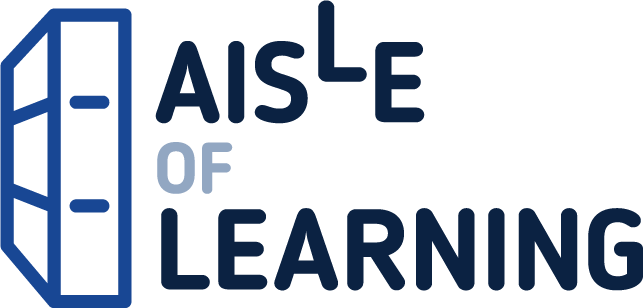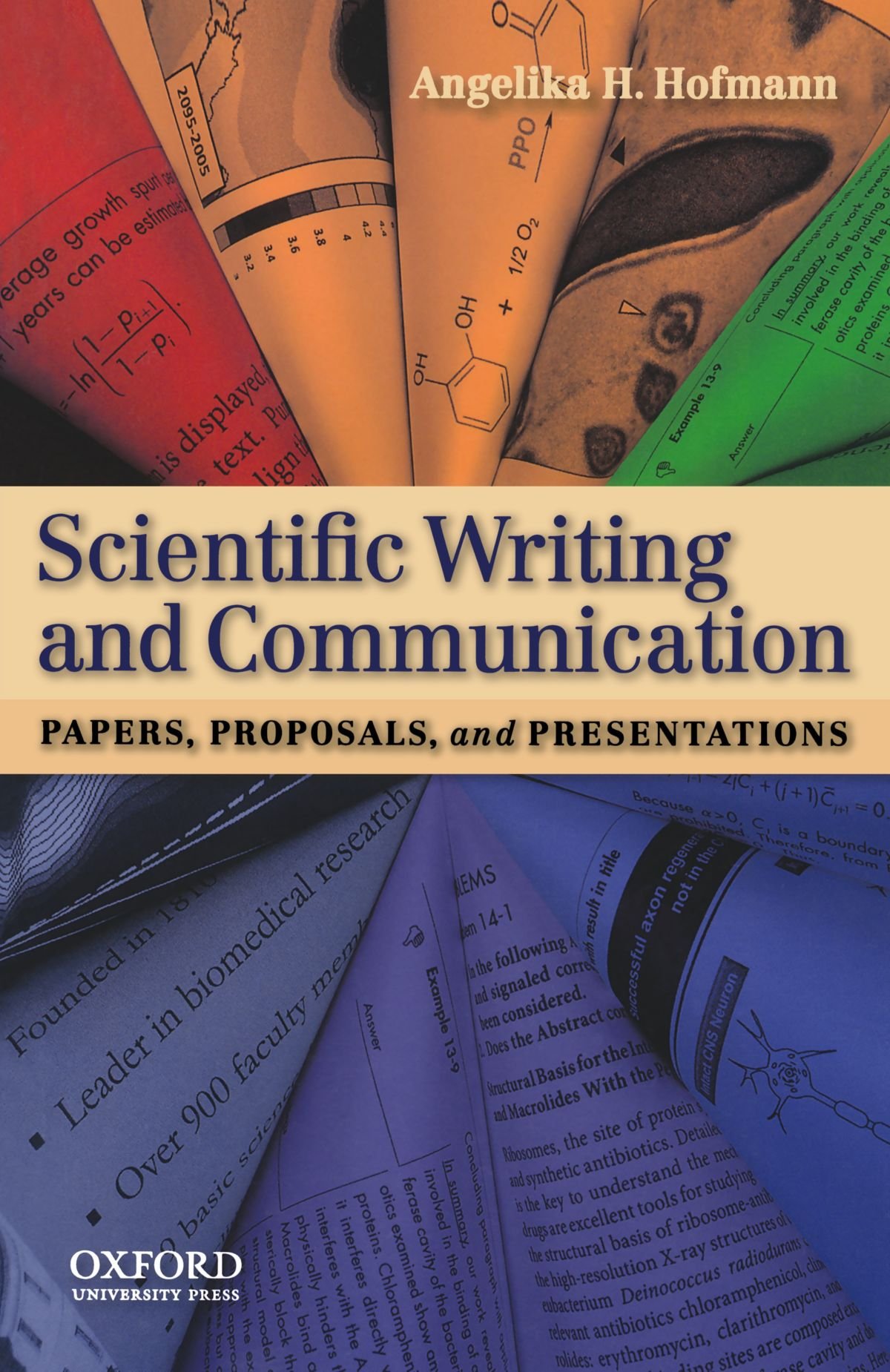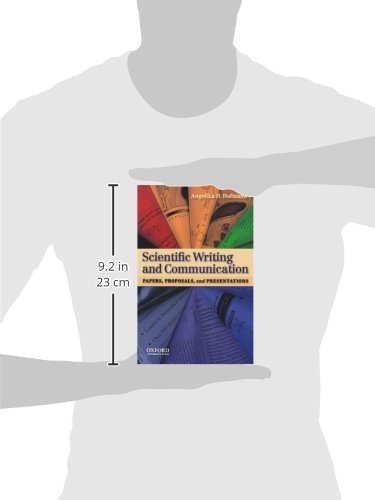Scientific Writing and Communication: Papers, Proposals, and Presentations covers all the areas of scientific communication that a scientist needs to know and to master to successfully promote his or her research and career. This unique “all-in-one” handbook begins with a discussion of the basics of scientific writing style and composition and then applies these principles to writing research papers, review articles, grant proposals, research statements, and resumes as well as to preparing academic presentations and posters. FEATURES: A practical presentation carefully introduces such basic writing mechanics as word choice and word location, sentence structure, and paragraph organization before moving into manuscript planning and organizational strategies. Extensive hands-on guidance for composing scientific documents and presentations then follows. Relevant and multi-disciplinary examples taken from real research papers and grant proposals by writers ranging from students to Nobel Laureates illustrate clear technical writing as well as common mistakes that one should avoid. Examples are drawn from a broad range of scientific disciplines including medicine, molecular biology, biochemistry, ecology, geology, chemistry, engineering, and physics. Extensive end-of-chapter exercise sets provide the opportunity to review style and composition principles and encourage readers to apply them to their own writing. Writing guidelines and revision checklists warn scientists against common pitfalls and equip them with the most successful techniques to revise a scientific paper, review article, or grant proposal. Annotated text passages bring the writing principles and guidelines to life by applying them to real-world, relevant, and multidisciplinary examples. Clear, easy-to-follow writing style is understandable to both native and non-native English speakers; special ESL features address problems faced by non-native English speakers. Eight chapters on grant writing demonstrate how to write successful grant applications and how to avoid the most common application mistakes. Covering all the facets of communication that scientists need to master, Scientific Writing and Communication: Papers, Proposals, and Presentations is ideal for a wide range of readers–from upper-level undergraduates and graduate students to postdoctoral fellows, faculty, and professional researchers–in the life sciences, medicine, psychology, chemistry, and engineering.
Scientific Writing and Communication: Papers, Proposals, and Presentations
$27.00
This book provides instruction on scientific writing and communication, essential skills for students in science, technology, engineering, and math fields.
Additional information
| Weight | 0.953 lbs |
|---|---|
| Dimensions | 23.4 × 3.6 × 15.5 in |
Scientific Writing and Communication: Papers, Proposals, and Presentations
$16.32
This guide teaches essential skills in scientific writing and communication, preparing students for academic and professional success in STEM fields.
Scientific Writing and Communication: Papers, Proposals, and Presentations, Second Edition, covers all the areas of scientific communication that a scientist needs to know and to master in order to successfully promote his or her research and career. This unique “all-in-one” handbook begins with a discussion of the basics of scientific writing style and composition and then applies these principles to writing research papers, review articles, grant proposals, research statements, and rsums and to preparing academic presentations and posters. It is ideal for a wide range of readers–from upper-level undergraduates and graduate students to postdoctoral fellows, faculty, and professional researchers in the life sciences, medicine, psychology, chemistry, physics, and engineering. FEATURES A practical presentation carefully introduces basic writing mechanics before moving into manuscript planning and organizational strategies. Extensive hands-on guidance for composing scientific documents and presentations then follows. Relevant and multidisciplinary examples selected from real research papers and grant proposals by writers ranging from students to Nobel Laureates illustrate clear technical writing and common mistakes that one should avoid. Annotated text passages bring the writing principles and guidelines to life by applying them to real-world, relevant, and multidisciplinary examples. Extensive end-of-chapter exercise sets provide the opportunity to review style and composition principles and encourage readers to apply them to their own writing. Writing guidelines and revision checklists warn scientists against common pitfalls and equip them with the most successful techniques to revise a scientific paper, review article, or grant proposal. The book’s clear, easy-to-follow writing style appeals to both native and non-native English speakers; special ESL features also point out difficulties experienced primarily by non-native speakers. Tables and lists of sample sentences and phrases aid in composing different sections of a scientific paper, review article, or grant proposal. Thorough attention to research articles advises readers on composing successful manuscripts for publication in peer-reviewed journals from initial drafting to the response to reviewers. Comprehensive coverage of grant writing guides scientists through the entire process of applying for a grant, from the initial letter of inquiry to proposal revision and submission.
Additional information
| Weight | 0.953 lbs |
|---|---|
| Dimensions | 23.4 × 3.3 × 15.5 in |
Reviews
There are no reviews yet.












Reviews
There are no reviews yet.